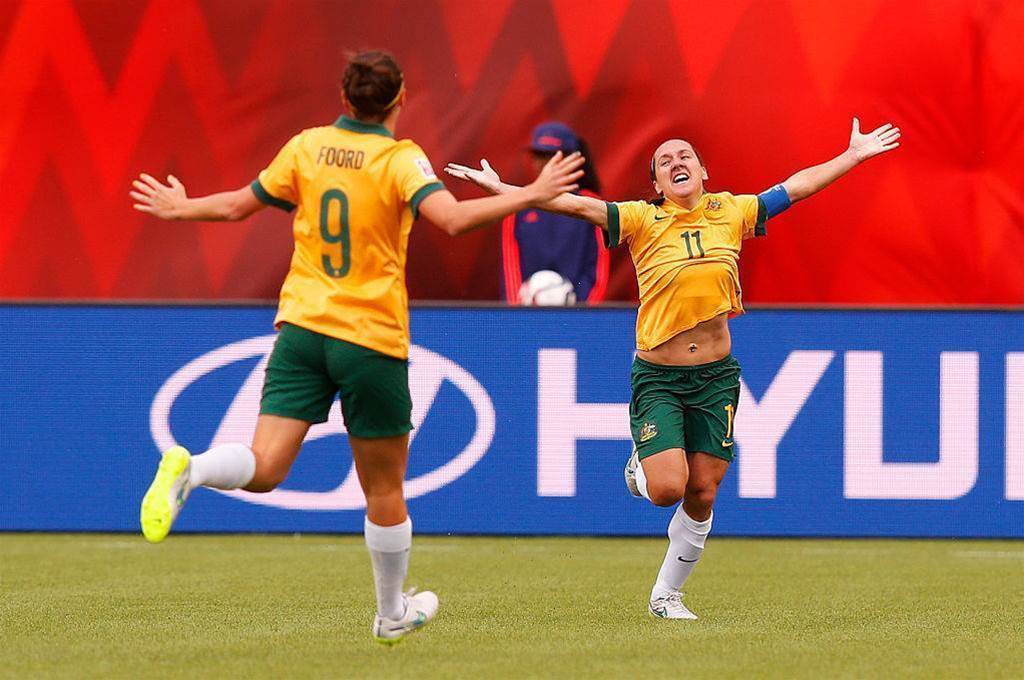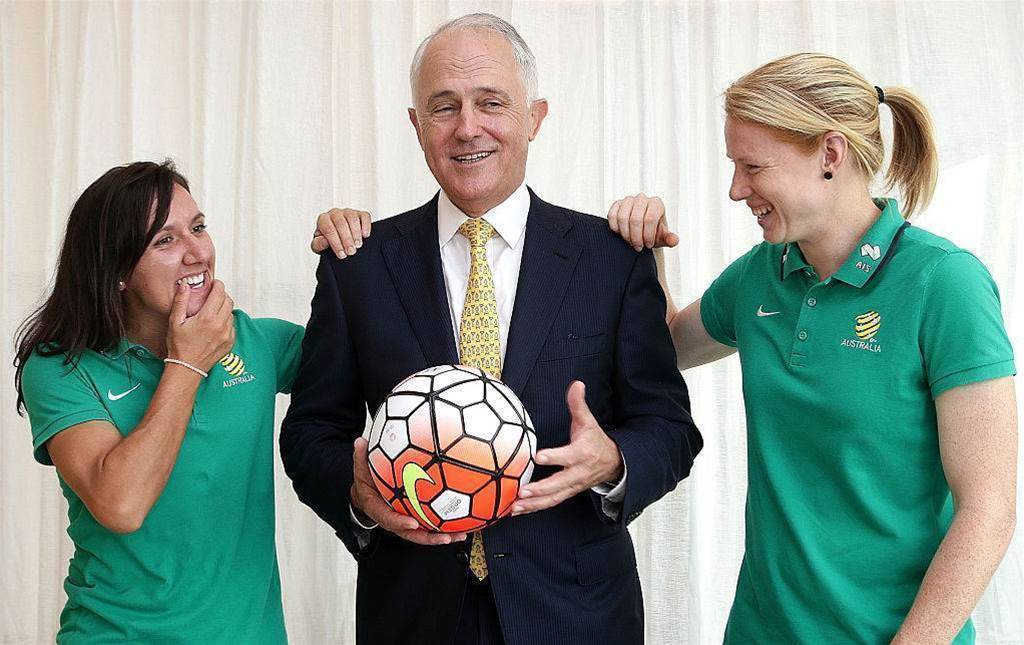"I love serial killers," Lisa De Vanna nonchalantly tells Optus Sport, grinning through oversized sunglasses as she leans back against a wooden jetty near her Spearwood home.
"I love biographies of serial killers 'cause I just love the mindset. I've always been someone who's intrigued by different people's mindsets."
There are few subtleties to one of Australia's most decorated, durable and divisive sportspeople.
At 150 national appearances, De Vanna is set to equal Australia's most-capped footballer Cheryl Salisbury's 151 if she plays against Norway on Sunday.
Meanwhile, her 47 goals are the most of any Matilda and just three short of Tim Cahill’s Australian record. She’s already scored at three consecutive World Cups, this is her fourth.
She’s lifted an Asian Cup, an OFC Cup, the Tournament of Nations, four W-League Championships, FFA Female Footballer of the Year, the Julie Dolan medal, WNSL golden boot, two World Cup All-Star appearances and a FIFA Puskas Award nomination.
Before long, the unapologetically brash and controversial striker is destined to hold the two-leading records in Australian football history, taking her rightful place at the pinnacle of the Australian game.

De Vanna grew up in a poor family among the strong ethnic communities in Perth’s southern suburbs, honing her skills and toughening her approach as a “ritual” with her brother and his friends. As she says, “Boys are tough and there were only boys. When you finally enter a girls’ team, sometimes they can’t take it.”
She sold raffle tickets and relied on her mother’s Centrelink payments to attend her first football camp, before leaving home as a teenager to play in Adelaide.
She calls it luck that she ever made it as a professional: one day a bus carrying the Young Matildas stopped where she was training and watched her score a penalty. They watched her match the next day and she was brought into the squad.
But this was 2001, a world away from the relative heights her side enjoys today. Only two years earlier, the still-amateur Matildas had been forced to pose naked for a calendar in order to fund the team. Soccer Australia was collapsing around them and many of the squad’s leaders were leaving the game.
The dawn of a new era made way for a different type of female footballer. A prodigious talent, De Vanna was an abrasive perfectionist, whose determination vastly eclipsed the level of many Young Socceroos her age.
But as she endured for over a decade, there was a stark difference between her own professionalism and a professional career.
“My first World Cup was in 2007. Back then, no one really gave a shit about women’s sport,” De Vanna wrote for the Players’ Voice.
“The tournament was bitter, sad and hard, but it also changed women’s football. We got a little bit of attention and we became a brand.
“We were pretty much a team of thugs that just kicked players.”
The Matildas had been re-energised in 2005 by the appointment of Scottish coach Tom Sermanni, who took advantage of the squad’s competitive physicality, enabling them to compete against the world’s best.
A young De Vanna had merged effortlessly into a diverse squad, a crucible of different aspirations, experiences, lifestyles and sexualities. She epitomised the youthful ambition and expectation of a new generation of female sportspeople, while the squad’s leaders were world-weary women, who had struggled through momentous obstacles to reach the end of their careers.
De Vanna was an enigma from the very beginning; exceptionally quick – “in terms of short sprints, the young ones still can’t beat me” - technically gifted and phenomenally agile despite her stout, stocky build.
Former Socceroo Craig Foster said: "She ran on jet-fuel; burning up twice as fast, but with incredible impact.”
She left Australia in 2006 to chase a professional career in England, earning £50 a week, spending her weekends working in a pub. In 2009 she became one of the first Australian women to play in the U.S Women’s National Soccer League, carving a path that the vast majority of Matildas follow to this day.
She was taken under the wing of the likes of Abby Wambach, Heather Garriock and Salisbury – the latter she calls the only person who could put "a lump in her throat".
They supported her rapid development to become one of the world’s greatest female footballers in the late-2000s. But they were equally quick to reprimand her many indiscretions. You could take the girl out of Spearwood, but you couldn’t take Spearwood out of the girl.
''The perception of her is that she is a psycho and will play up,” Garriock told the Sydney Morning Herald.
“But in many ways, because of her family background and circumstances, she wasn't brought up to control her emotions.”
Sermanni added: “She puts herself under so much pressure.
“And the more the pressure builds up, she feels it and I liken her to a pressure cooker, she suddenly explodes. I think her implosions don't impact on the team as much as they do her.”
Former coach Alistair Edwards was less diplomatic, calling her “brilliant” and a “brat”.

“I don’t think I scared or intimidated anyone,” De Vanna wrote. “I’m a pretty chilled, laidback person. I give shit to everyone, I stir things up, so it’s not like I come in there and I’m quiet.
“I used to lose my mind about simple things,” she told The Guardian.
“I mean, how do you not want to work hard, how do you not want to play with pride? Because I was in that environment when I had the best in the world, with Wambach and Sonia Bompastor – these legends of the game – and they drilled it into my head, to be the best you have to train the best.
“In the past [other Matildas] didn’t care – but I cared. So then I’m the one blowing up because I wanted the best for myself, I wanted the best for my team and I expected better from my teammates.”
Her profile rose dramatically after she led the Matildas’ performances in the 2007 World Cup but off-field incidents came to the fore in 2010, when she was publicly ridiculed for a series of sexually explicit Facebook posts, which threw her Matildas place into jeopardy.
While many of the training ground incidents were kept internal and the mainstream media had been quick to ignore her trailblazing rise in women’s football, suddenly these stories were plastered across websites and newspapers around the country.
Yet despite a nomadic career, her form has rarely faltered.
She was successful in the Scandinavian women’s leagues that laid a template for professional female competitions, before becoming a key figure in the WNSL for many years as the United States took over the women’s football world.
She confirmed her status through continual W-League cameos; racking up brief, high-octane spells at eight of the league’s nine clubs. As De Vanna’s career’s progressed, her goalscoring has become less prolific but her leadership – demanding professionalism from every footballer she plays with – has become an unlikely contributor to her longevity at the highest level.
Nearly a decade later, she never hides away from her past. Beneath the bravado lie elements of self-doubt - when she was made co-captain of the Matildas in 2015 she cried, saying “obviously I’m not the ideal captain given my past, but I did a lot of changing and a lot of soul-searching.”
Now completing her coaching badges, she still expresses insecurity over her outspoken nature. She also admits that she only recently began to feel content in her own body.
But therein lies the redemption of Lisa De Vanna. As the oldest member of the Matildas’ self-described ‘golden generation’, she embraces her role as a leader, both more and less in the spotlight than ever before.

For close to a decade she was the leading light of Australian women’s football, the brash and controversial, yet often-unseen poster-girl. Now, at 34-years-old, she knocks shoulders with players less than half her age in the current Matildas squad.
Her position as an ambassador has been eclipsed by the mercurial rise of Sam Kerr, who has partly led and partly been the beneficiary of a rapid increase in support and awareness of the Matildas.
As a key member of the World Cup’s dark horses, De Vanna is a transient link between the past and present of Australian football. She cemented the Matildas’ fighting spirit, while transitioning the side from “thugs” to one of the world’s most talented teams.
Throughout this time she’s often stood alone, surviving bust-ups, arguments, controversies and expulsions.
She was one of very few that overlooked unequal treatment from FFA, refusing to boycott the Matildas’ 2015 friendly against the United States. Instead, she cited that she “didn’t know whether I’d ever have the chance to play the world’s best team again.”
Rather than ever acquiesce to public-pleasing moral responsibility, De Vanna’s remained true to her roots. She’s the archetypal Aussie battler from a rowdy Portugese household, who swears like a trooper and will leave a legacy greater than any Australian footballer before her.
It’s a legacy that tells those who’d prefer the Matildas to be ladies, hand-picked from artificial training grounds to ‘Suck on that one’. The Matildas are born tackling boys on tough Spearwood streets and they’ve fought for everything they've got.
They’re Australia’s favourite sporting team for a reason, after all.
Related Articles

Champion A-League coach set to join Premier League giants

Split decision: Popovic in mix as Hajduk hunt new boss













